This was our last full day in Kyoto; we’d thoroughly enjoyed it so far, and still had one of the best destinations to come – Fushimi Inari Taisha Shrine.
Fushimi Inari Taisha Shrine

We rode the short local train journey to the Inari station. It was cold and wet, but tolerable.
The Fushimi Inari Taisha Shrine is a Shinto shrine in southeast Kyoto. It consists of a number of structures near the entrance, with a pathway leading up the hillside behind to Mount Inari, lined with over a thousand ‘Torii gates’ that create a tunnel effect. Each Torii gate is devoted to the deity Inari by individuals and businesses. From the website linked above, “It is said that the shrine was founded in 711 before Kyoto became Japan’s capital. The path leading up 233-meter-tall Mt. Inari is dotted with many stone altars (otsuka) and marked by approximately 10,000 torii gates.”









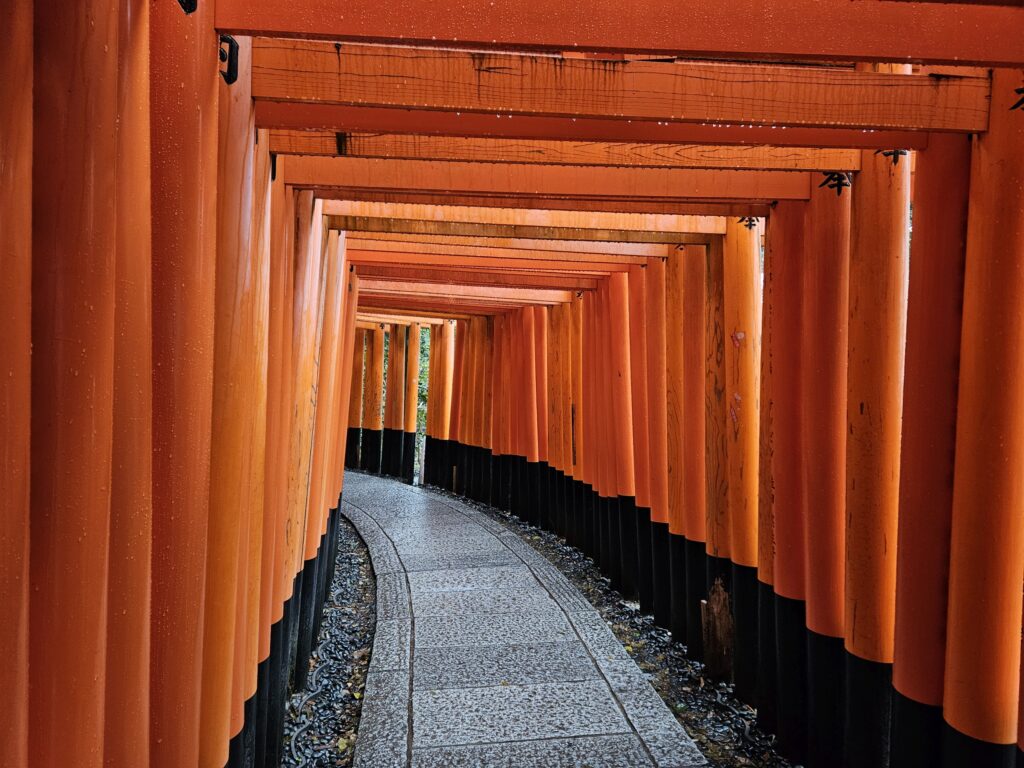


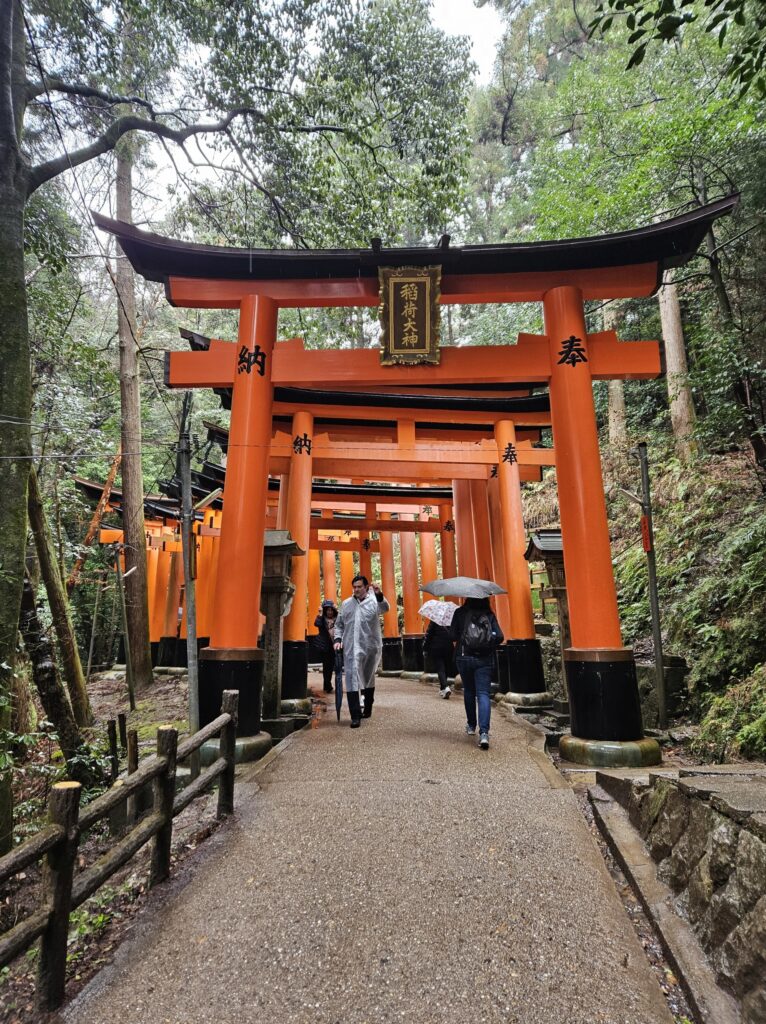


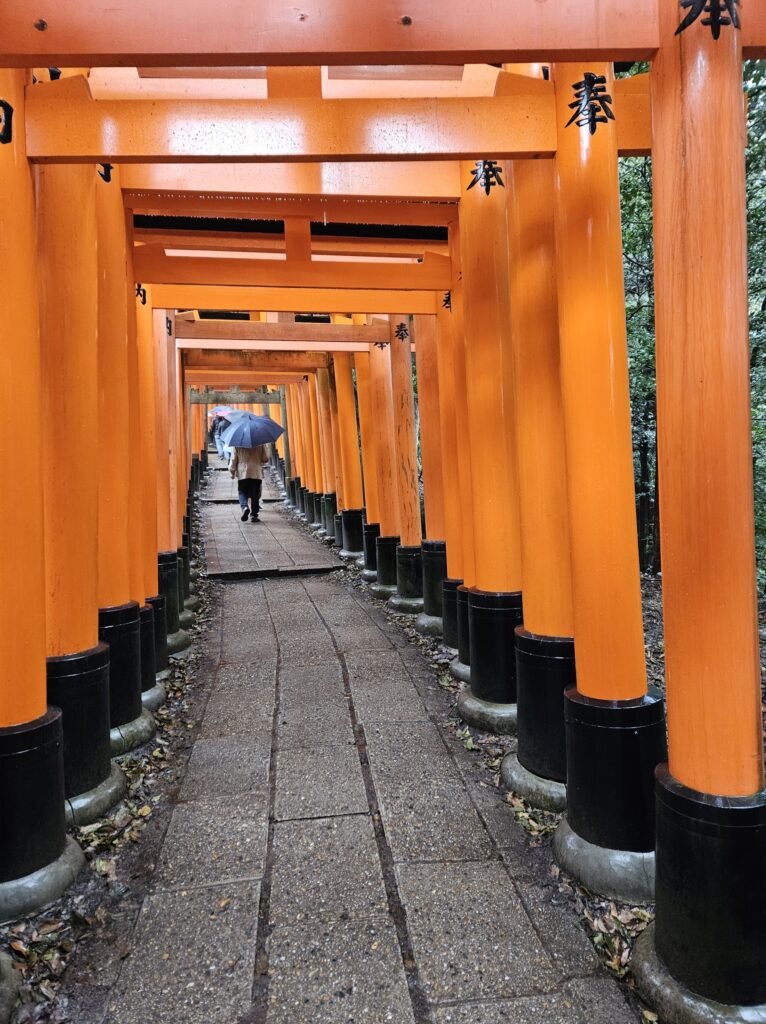


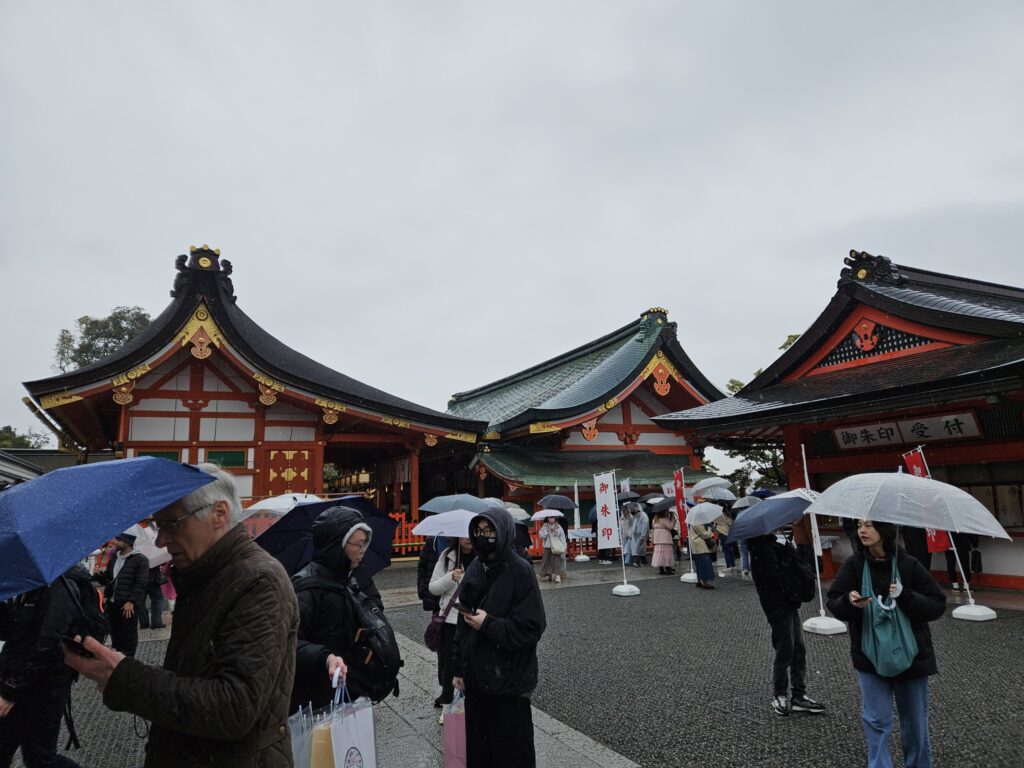


Typical Torii Gate, with inscriptions on the columns (name of the donor, and date of the donation).

Even though it was very crowded at the start, by the time you get half-way up, the crowds have thinned out and you can relax and enjoy the experience.
Fushimi Inari neighborhood
Upon returning to the main entrance, we explored the small street next to the shrine area. This was a lovely little street full of vendors selling foods and various trinkets.
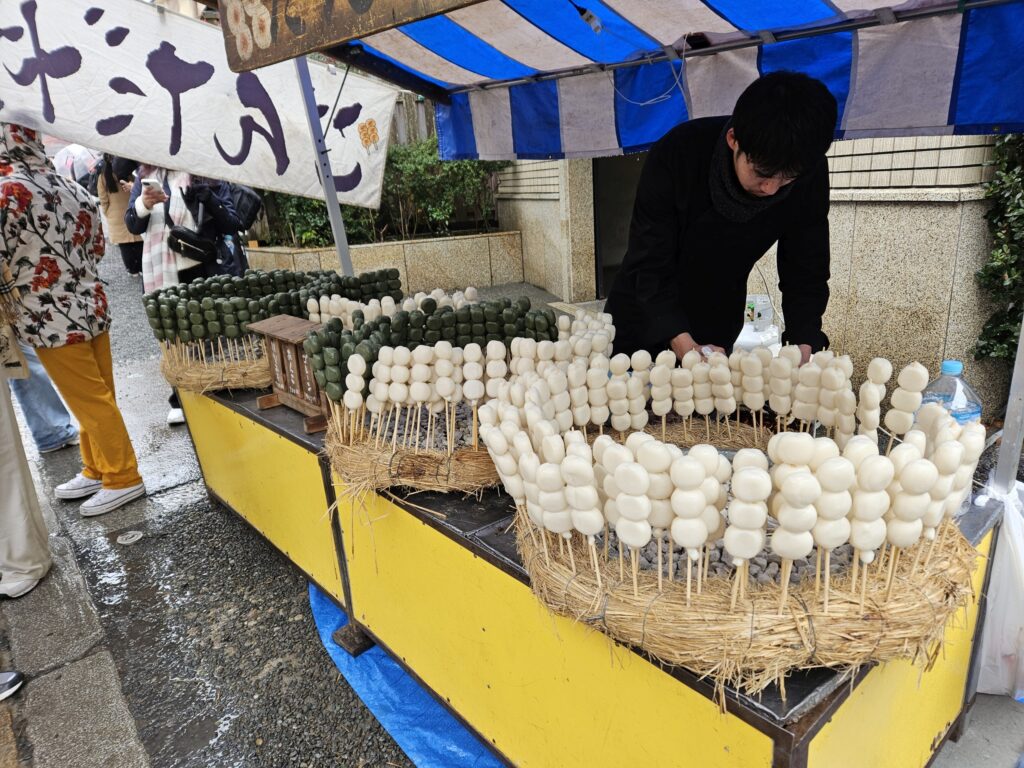

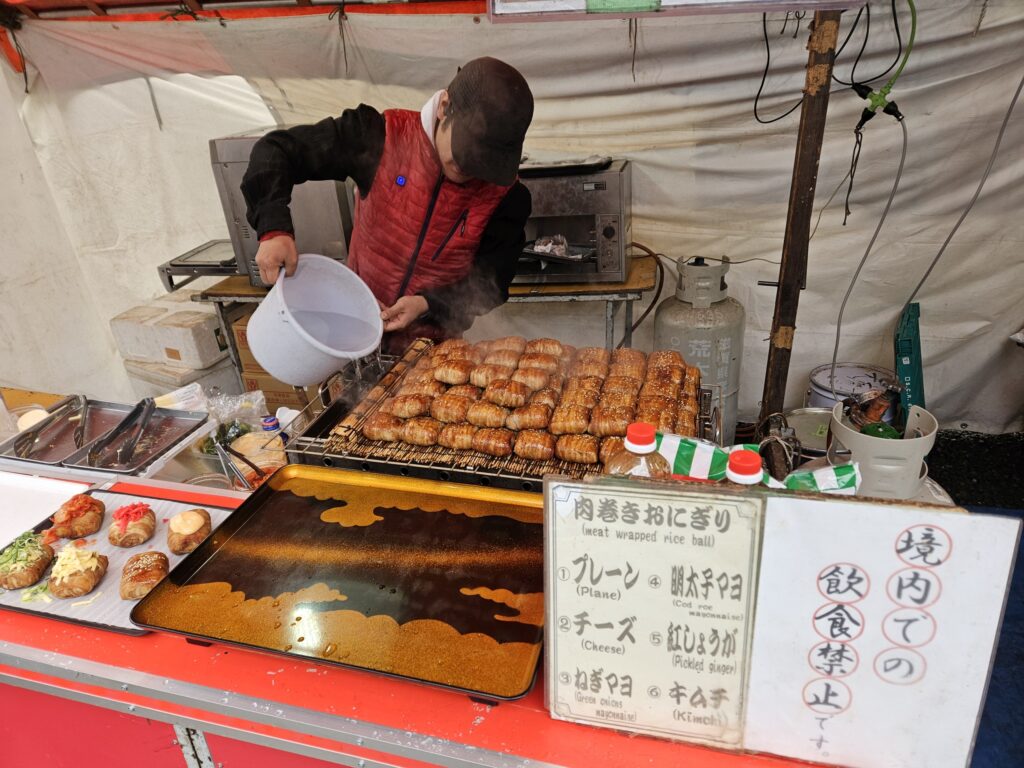

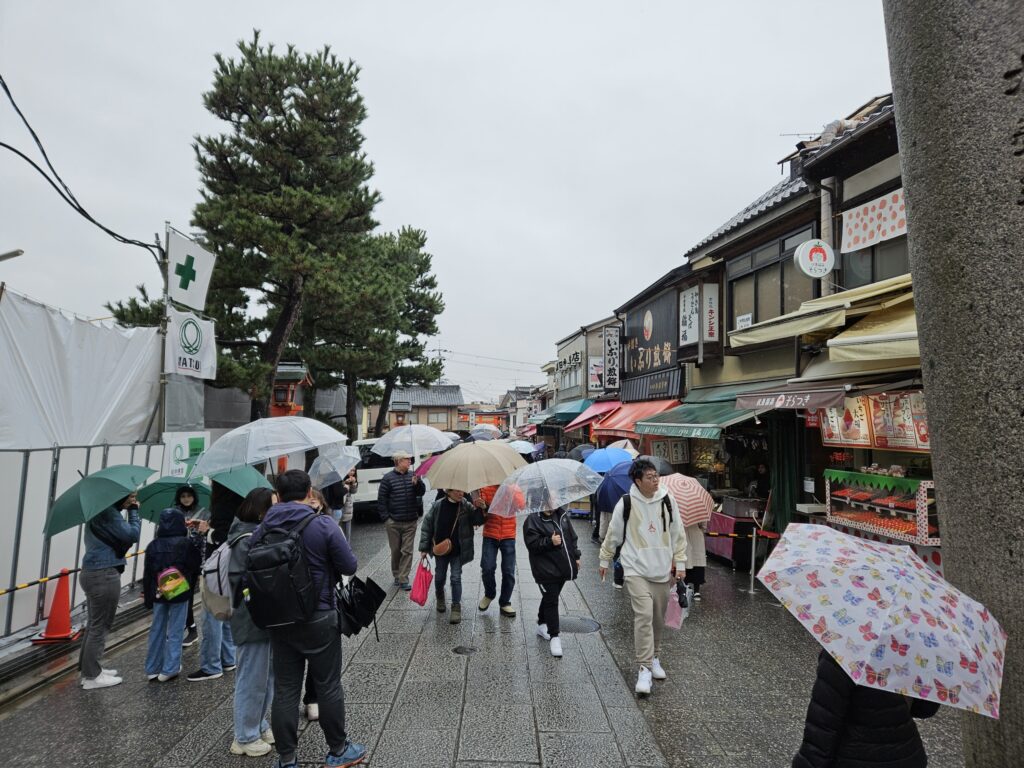
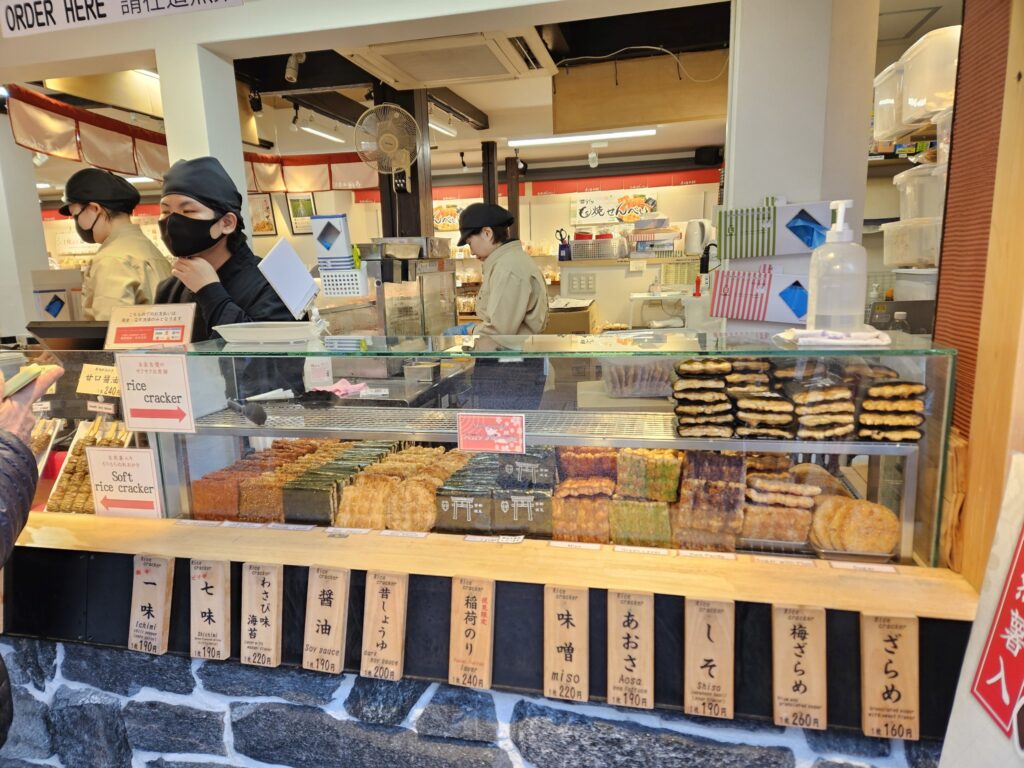
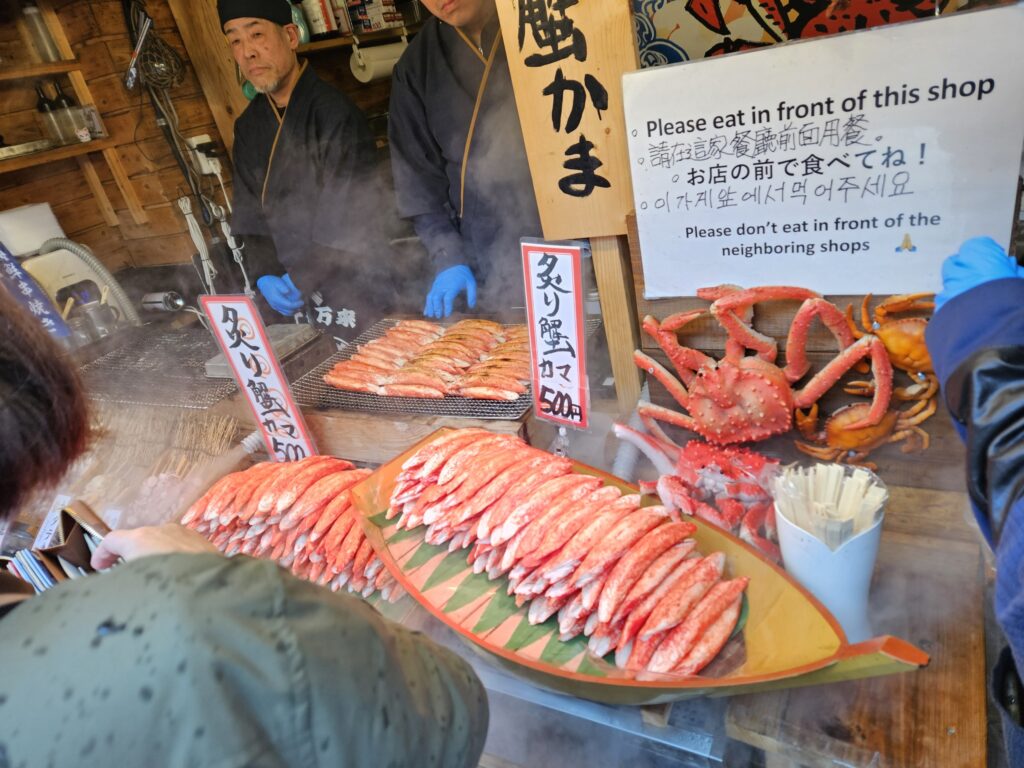


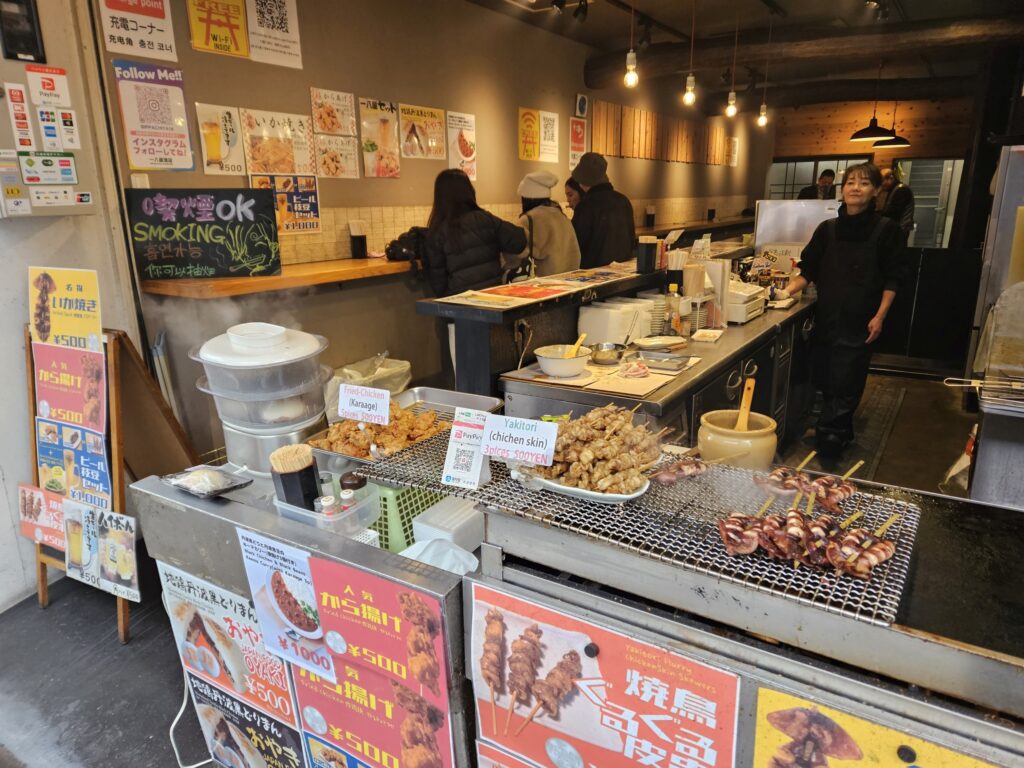
Kimonos
Back at the shrine entrance, we noticed a collection of women dressed in traditional Kimonos. We saw this all over Kyoto, and from what I can understand, it’s quite the tradition among high school girls and young women to rent a kimono for a day and travel around Kyoto. Some stories even suggest that high school girls from as far afield as Taiwan will come to Kyoto for this experience as part of their graduation rites! There are also a smaller number of men who will wear the traditional garments. Apparently some schools in Kyoto also require girls to dress in Kimonos, at least on some days. This article talks about Kimonos in Kyoto. Whatever the reason, it adds to the charm of Kyoto. Note – the vast majority of ladies you see in Kimonos are just having fun and enjoying their ‘Instagram moment’ but there are genuine Geishas in Kyoto, and it’s actually against the law to photograph or otherwise harass them. See this article: Kyoto Passes Law to Protect Traditional Geisha From the Obnoxious Tourist ‘Paparazzi’

Gion
After a thoroughly enjoyable afternoon at Fushimi Inari, we headed back to the Gion district for another look. It was still on the cold and wet side, but tolerable.
The Gion district is pretty at night with all the restaurant lights, and is supposed to be gorgeous during the Cherry Blossom and Fall Color periods, but on a cold, wet day, it’s just ‘pleasant to wander around’; at least, where we went!
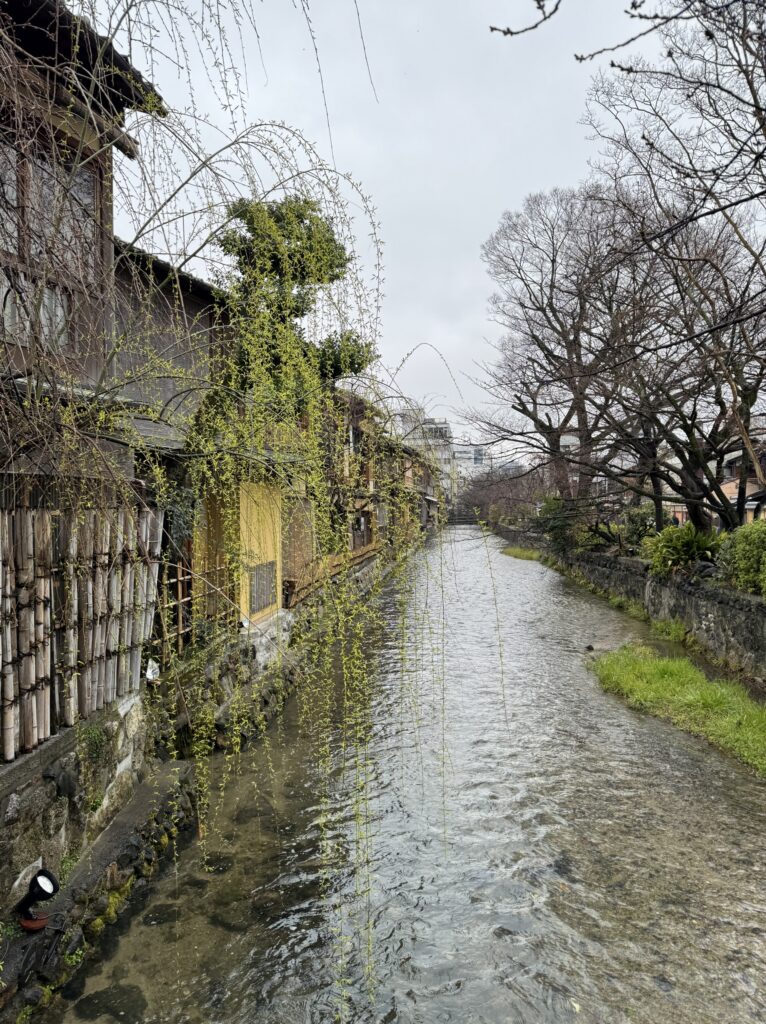
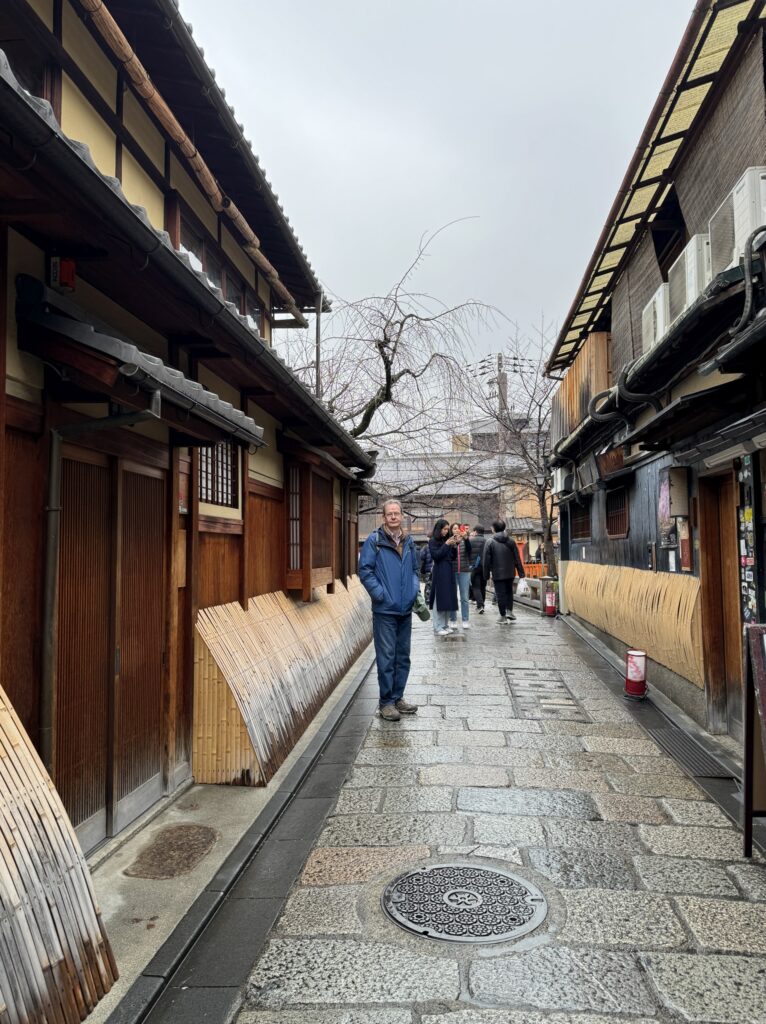

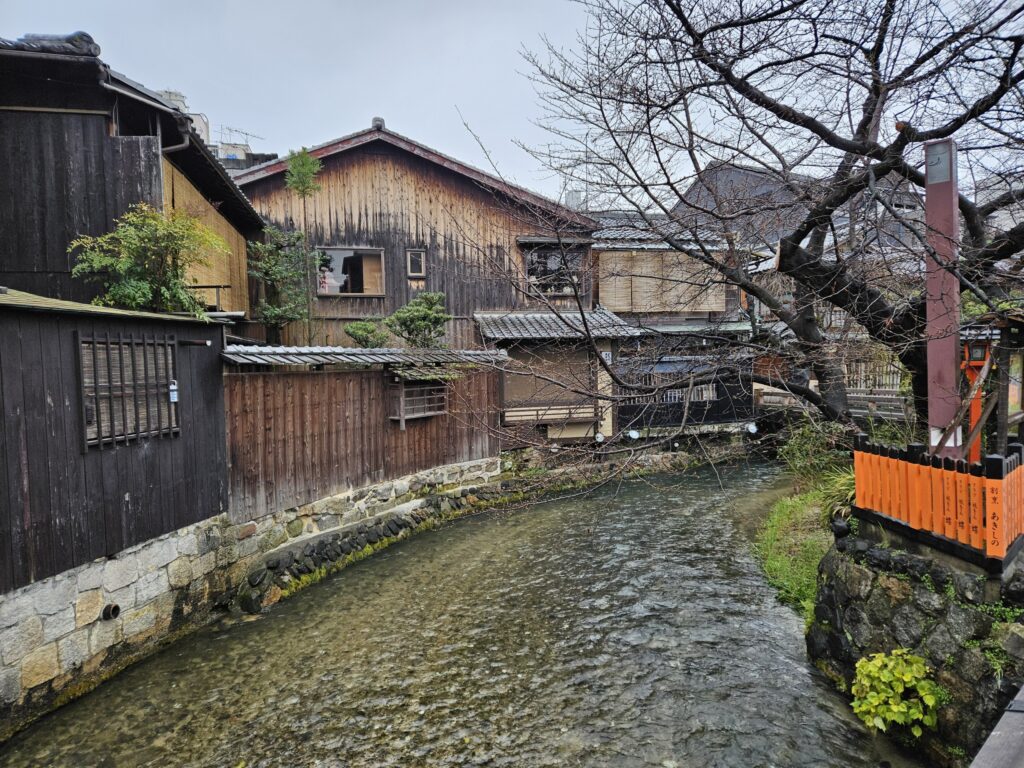

Ramen Joint
For our last night’s dinner, we had researched a true ‘hole in the wall’ Ramen joint – very highly rated (called Ginjo-Ramen Kubota). They didn’t take reservations and the lines were reported to be long, so we headed there early – arriving 30 minutes before opening. We were the first ones there, but by the time they opened, the line was long and the first batch of tables already filled. They only have about 8 seats (at a counter wrapped around the small kitchen), and the ‘menu’ consists of three different types of noodle, with or without a boiled egg added – so six choices!
The ordering process was confusing; you order and pay at a kiosk (that is ‘cash only’!), then present your ‘ticket’ to the two guys who work the kitchen – the only ‘staff’ present. Each dish was about 1,000 yen – about $7 US – dirt cheap! It was absolutely delicious – definitely one of the best ramen dishes ever!
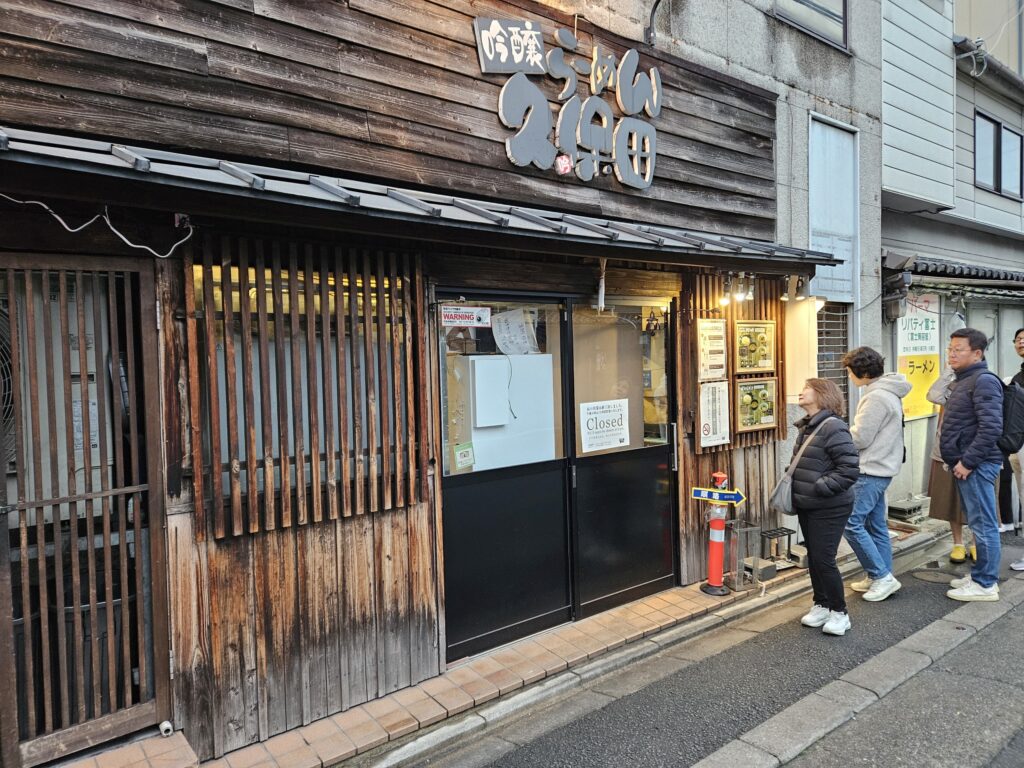



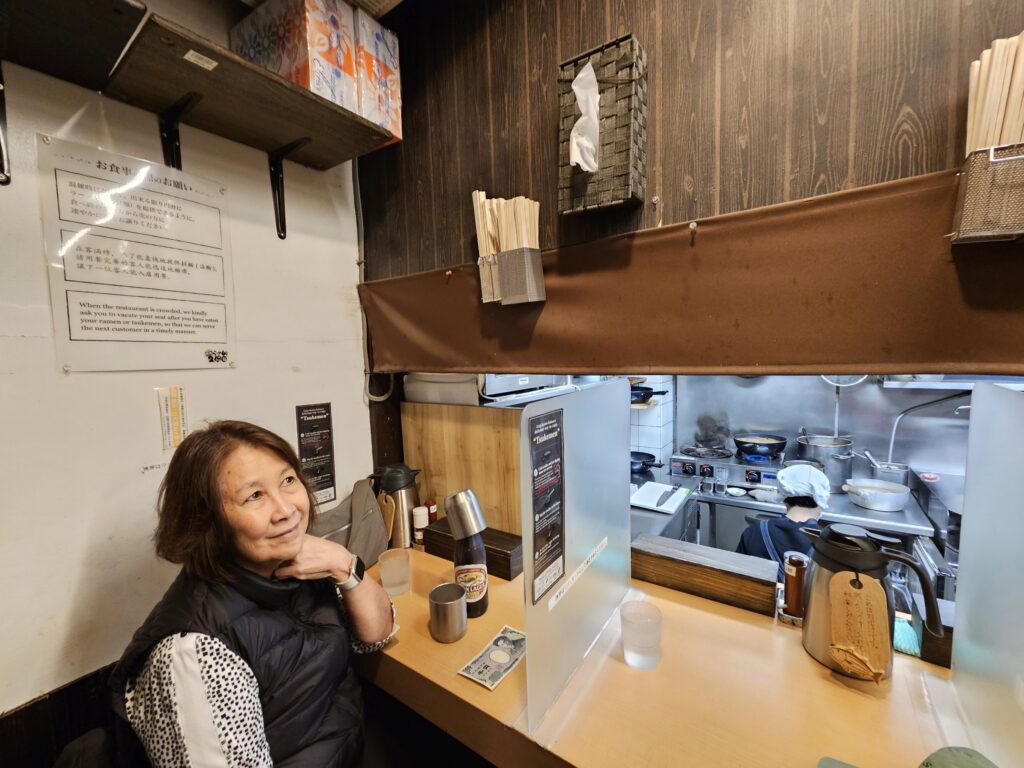

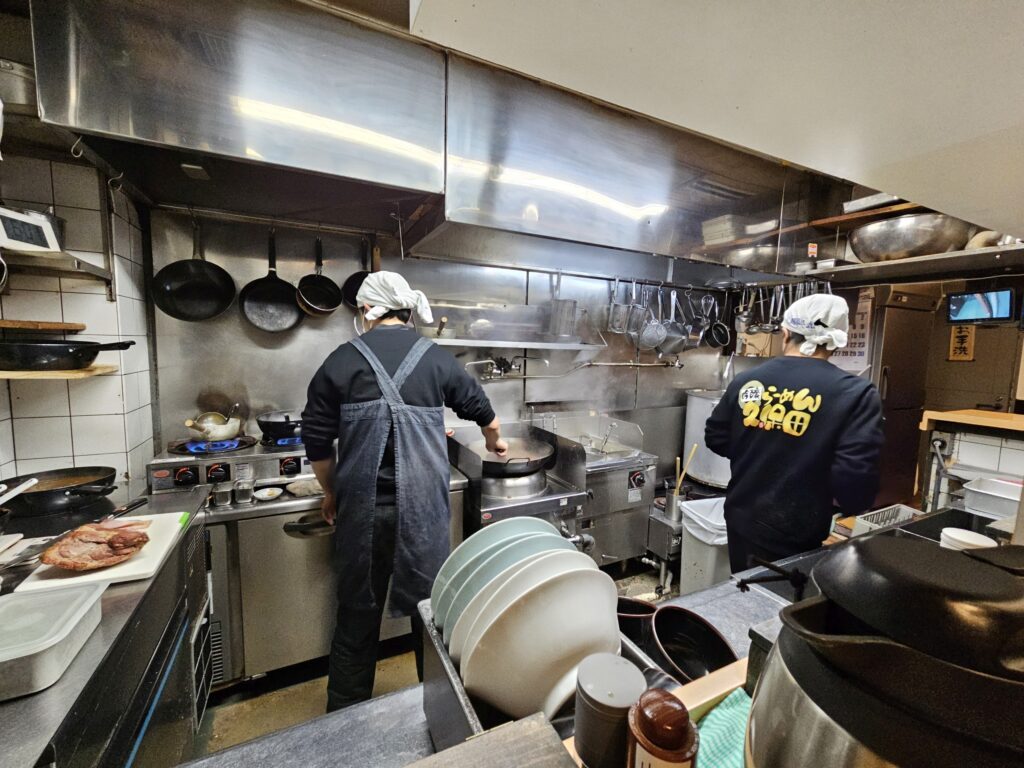





We returned to our hotel by taxi for our last night in Kyoto. The hotel area was safe, clean, and inviting.


Leave a Reply